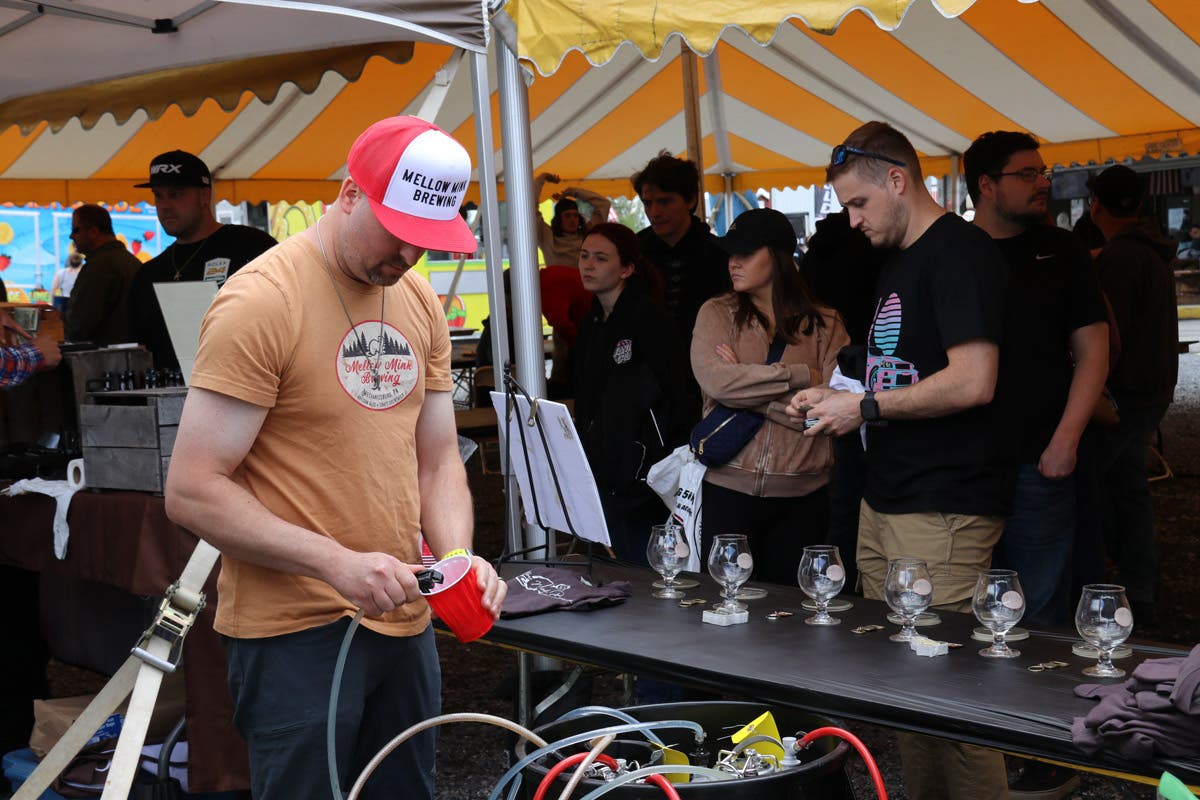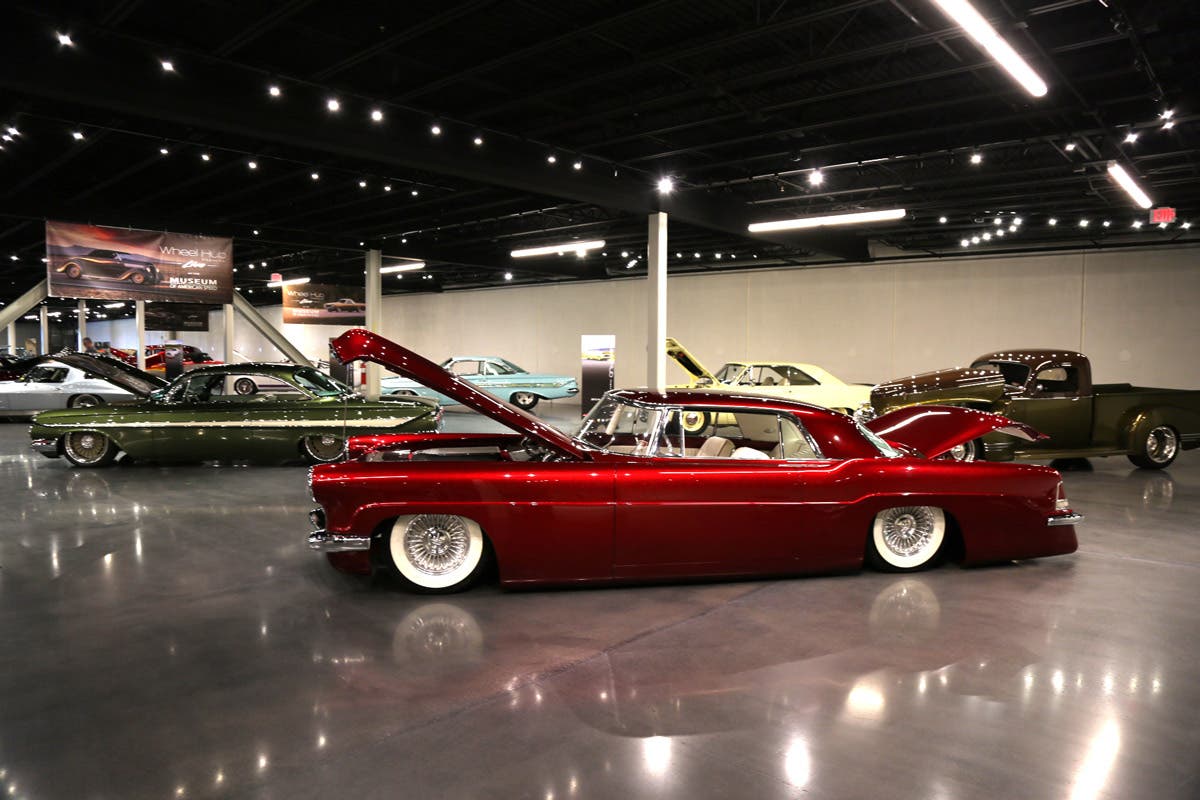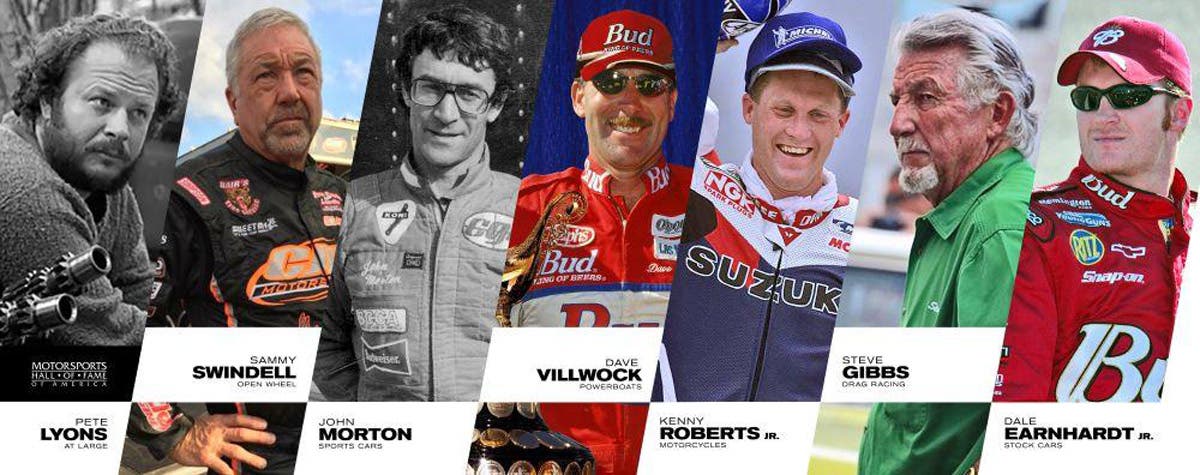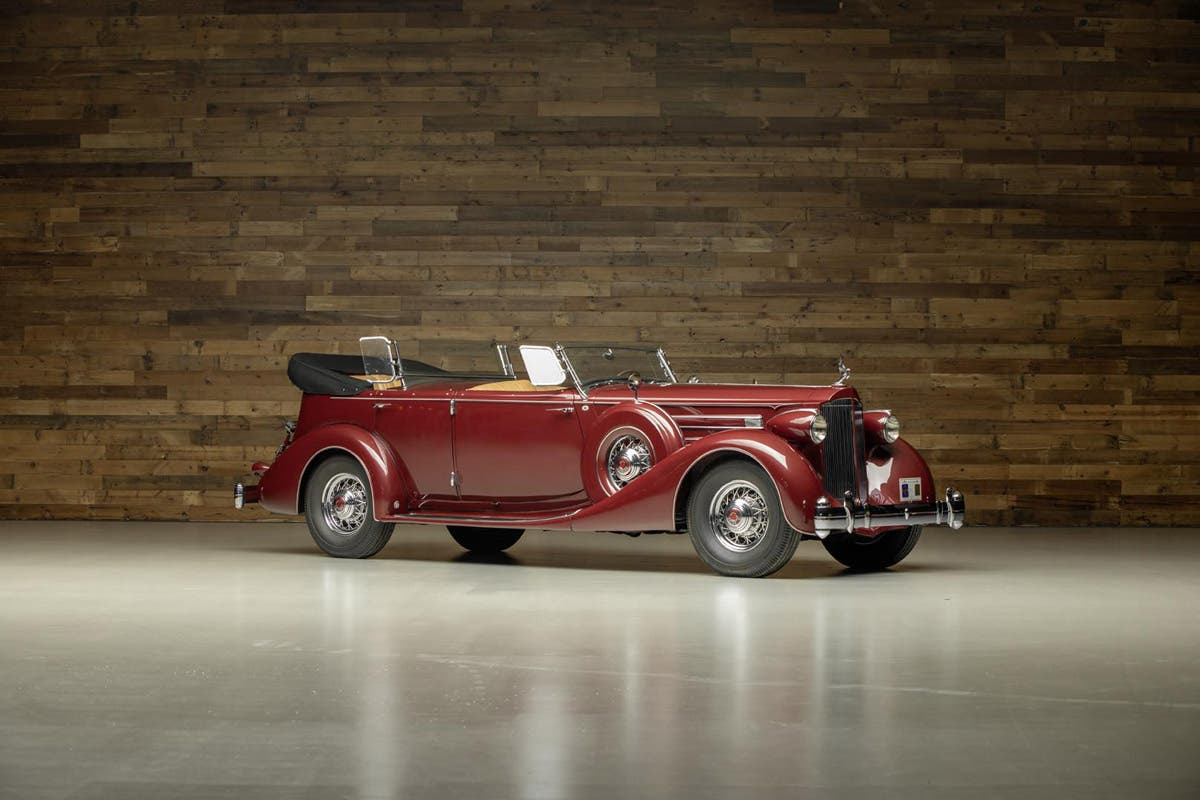60-Plus Years of Impala
A look back at Chevy’s popular model before its next hiatus By David W. Temple; Photos by author or GM Media Archive For the third time in its history, Chevrolet…
A look back at Chevy’s popular model before its next hiatus
By David W. Temple; Photos by author or GM Media Archive
For the third time in its history, Chevrolet has announced it would discontinue the Impala nameplate. The last Impala is set to drive off the assembly line and into the sunset at the end of January 2020.
For many Chevrolet fans, the full-size Impala has been a pillar of the Chevrolet lineup since it debuted in 1958. As American car buyer tastes and needs have changed over the last 60-plus years, the big Impala has found itself embraced by the market, and then squeezed out it. In its heyday, the Impala was America’s best-selling vehicle but now that today’s vehicle buyers want SUVs instead of large sedans, the Impala will fall into extinction.
Raising the Impala
By the time the 1955 Chevrolet lineup went on sale, General Motors had about a 50 percent market share with its Chevrolet division accounting for approximately half of that figure. The 1955 Chevy models had an all-new design and optional V-8 which further helped energize sales. The top-of-the-line Bel Air model proved immensely popular with the public. However, change was already in the works before 1955 had expired; designers were thinking of a new sporty, big Chevrolet that would have a name well-recognized 60 years later -— Impala!
GM Styling developed the 1956 Corvette Impala show car for that year’s GM Motorama. Within two years, the Impala two-door hardtop and convertible, with styling based in part on that show car, entered Chevrolet dealers’ inventories across the country. The new model displaced the Bel Air at the top of the hierarchy, though technically it was a sub-series of the 1958 Bel Air line.
1958
The Impala name was chosen to convey the image of grace and speed and when equipped with a high-performance V-8, the Impala was reasonably quick. As for the grace or elegance aspect, the 1958 Impala lived up to the image by having some of the styling attributes of a Cadillac such as a lavish interior of tri-tone upholstery and plenty of chrome.
Chevy’s new Impala was not simply comprised of a colorful interior and extra trim; its sheet metal was exclusive to the model from the cowl back. Simulated air vents on the quarter panels and roof were specific to the Impala as well. Optional mechanical systems included several V-8 engines, automatic transmission and an air suspension referred to as “Level-Air” in Chevrolet literature. The $128 option proved to be unreliable, though. The few ordered with the setup were in most instances refitted with conventional coil springs. It was dropped from the list of options by the end of the 1959 model year.
Under the hood of full-size Chevrolet cars was any one of several engines carried over from 1957 (though slightly modified) including the “Ram Jet” fuel-injected 283, plus three versions of the new big-block 348-cid V-8 ranging from 250hp to 315hp with the latter being equipped with a Duntov cam, solid lifters, and triple two-barrel carburetors.
The 1958 Chevrolets sold well during a year marred by an economic downturn. Even so, change was in the works again. GM management made the decision to share bodies among the divisions for 1959, thus the 1958s were a one-year-only design.
1959 & 1960
The Impala gained individual model status and no longer was it considered a part of the Bel Air series in 1959. Furthermore, a four-door sedan and four-door hardtop were added to the Impala lineup. The most dominant styling characteristic of the redesigned cars was, of course, its deeply sculpted fins. An early report in Popular Mechanics on the 1959 Chevrolets said of the car, “Its low, flaring rear end is as expansive as the deck of an aircraft carrier and looks almost as wide from the driver’s seat. Horizontal taillights squint, like giant cat’s eyes, from under chrome eyebrows. At the front, two sets of paired headlamps are set as low as the law allows....” The car’s wildly styled body served as the basis for the new El Camino, which offered buyers a car-like truck and served as competition for Ford’s Ranchero.
The standard engine remained the familiar “Blue-Flame” straight-six, although the buyer could still obtain the small-block 283 with or without fuel-injection; extremely few of the latter were ordered for the full-size cars, though, thus it was dropped as an option for the big Chevys at the end of the model year. The 348 was offered again in the same three states of tune as the prior model year along with a few new variants including a pair featuring 11.25:1 compression ratios, dual valve springs, centrifugal distributor and scavenger exhaust headers. With the four-barrel version came 320 hp; the three-deuce engine pumped out 335. Additionally, Posi-traction (released for 1957) and the four-speed transmission were options welcomed by performance enthusiasts. Also offered at extra-cost was a handling package consisting of metallic brake linings, stiffer springs, larger shocks, stronger wheel bearings and ball joints.
For 1960, Chevy stylists made a number of changes to the sheet metal including crisper, flattened fins. Mechanical improvements were also carried out as well.
1961-1964
An all-new look emerged for 1961 under the leadership of GM Design chief Bill Mitchell. Mitchell, who assumed the position upon the retirement of the legendary Harley Earl, took Chevrolet in a new direction. The 1961s were shorter, narrower, lower and sans tailfins. Furthermore, the dog leg A-pillar and wrap around windshield used for the past six model years were gone. In their place were thin A- and C-pillars with a larger glass area.
For 1961 only, Chevrolet added a two-door sedan to the line of available Impala body styles. The 1961s looked rather sleek in any style, especially the two-door hardtop model with its bubble-like backlight.
A special few Impalas wore Super Sport (SS) badges. The SS was a package option consisting of special emblems, sportier interior trim, passenger grab bar, floor shift trim plate on four-speed cars, 7,000-rpm tach, three-bar spinner wheel covers and 8.00x14 thin-line whitewall tires. Under the hood was one of three versions of the 348 with 305 340, or 350 hp, or the very limited-production 409 introduced in January. Non-SS cars were available with six-cylinder power, the 283 or any version of the 348. According to 1961 sales literature, the SS option was available on any Impala body style, though evidently only the two-door versions and a few convertibles were so equipped.
Chevys powered by the 409 did well in drag racing and finished first and third at the Pike’s Peak Hill Climb during 1961. Results like these, as well as the SS option, gave Chevrolet a strong performance image which appealed to the emerging youth market of the era.
New sheet metal for 1962 provided another all-new look for the full size Chevrolets including, of course, the Impala. Impala two-door hardtops received a new roofline mimicking the appearance of a convertible top in the up position — an idea which appeared on the Sport Sedan four-door hardtop the previous model year. (1962 Bel Air two-door hardtops carried over the bubbletop styling for one more year.) Sales of the two-door hardtops soared well past those of 1961; total Impala sales were more than 700,000 cars. The SS package became a regular production option, but with six-cylinder power as standard issue. Most of them, though, were ordered with an extra-cost V-8 including the new small-block 327. The 348 was dropped in favor of the 409. Other changes included adding bucket seats and a console to the SS package, dropping the Impala two-door sedan and adding an Impala station wagon to the model lineup. The model year was a great one for Chevy, which was celebrating its 50th anniversary.
For 1963 Chevys, received a new look again with revised body panels as well as a new 235-cid six-cylinder. Though the 235 was standard, most buyers paid the extra cash required to get a V-8. Drag racers could order the Z11 option comprised of a bored-out 409 resulting in 427 cubic inches of displacement and aluminum body panels for weight reduction; only 57 Impalas were so equipped. This was also the year of the famous “Daytona Mystery Engine,” the 427 Mark II, which made an appearance on the NASCAR circuit. However, during 1963, GM managers officially banned factory support of race teams. Another significant event of the model year was the production of the 50-millionth Chevrolet, a gold two-door hardtop Impala SS.
The reskinned 1964s were very popular. Sales of the Impala two-door hardtops nearly rivaled those of the traditionally high-demand four-door sedans; over 442,000 were sold versus 536,000 of the sedans. The Super Sport went from an option package to model status and accounted for more than 185,000 sales.
1965 & 1966
The 1965s were completely redesigned cars. Two-door hardtops received a fastback roofline. More significantly was the availability of the new 396-cid V-8 released at mid-year; the “real fine” 409, praised in song by the Beach Boys, was dropped with the introduction of the new engine. This model year also brought second-tier status to the Impala. Just as the Impala displaced the Bel Air, the Caprice four-door hardtop replace the Impala as the top-of-the-line model.
Other changes were transpiring. Smaller and lighter cars — the Nova, Chevelle and eventually the Camaro — were becoming the basis for performance applications while the full-size cars were trending toward increased luxury. The Super Sport concept was offered on the Nova, Chevelle and Camaro. The Impala SS model continued to be offered, but its sales diminished throughout the 1960s to the point there was no justification for an Impala SS by 1970.
Sales of the Impala SS reached its peak in 1965 with nearly a quarter-million being built. Impala and Impala SS production totaled 1,046,000 vehicles in 1965, and that figure doesn’t include station wagons.
The Impala reappeared for 1966 with no major revisions; styling changes included a revised grille and taillamps. A significant mechanical update was the release of a new 427 V-8. Sales of the 1966 Impala and Impala SS dipped substantially. The Chevelle and the Caprice were taking sales away from the Impala series.
1967 & 1968
A new look was offered for 1967, but the sales slide continued. Even so, production of Impalas and Impala Super Sports totaled roughly 650,000 cars.
The 1968 Impala two-door hardtops were offered with a formal-style roofline borrowed from the Caprice; this Impalas model was dubbed Impala Custom Coupe. The standard 1968 Impala two-door hardtop continued with the fastback roofline. One other update was a raised lip at the rear of the hood to conceal the windshield wipers. Also, the SS this year regressed to an option package as it was in the beginning.
The standard SS package was rather subtle in 1967 and ’68, but buyers who selected the 427 engine in a 1967 or ’68 Super Sport received the SS427 package which included a special domed hood and more prominent SS call-outs, among other SS427-only features.
1969 & 1970
Impala sheet metal received a major redesigned again for 1969. Up front was a loop-style bumper. Even with the new look, the appearance of the new Chevys was not startlingly different from the 1967-1968 models. Another change was deleting the venerable 283 from the engine choices; a 307 replaced it though it was essentially the 283 with a longer stroke. The Impala SS made its final bow in 1969 and was again available with the hot 427 V-8.
For 1970, the Impala series received a minor facelift. More importantly, the high-performance 427 was dropped and replaced with a 454 in two states of tune — 345hp and 390hp. Also, a 350 and a 400 cid V-8 became available. There was no four-speed transmission offered for the big Chevrolets this model year. In general, full-size cars were no longer interesting to most performance enthusiasts.
1971-1976
Larger and heavier was the trend when the 1971 model cars arrived, and the Impala was right in step. The Impala continued to outsell the more luxurious and more expensive Caprice. In fact, the 10-millionth Impala was assembled during the 1972 model year, thus making it the most popular full-sized American car in history.
The 1973-1976 model years brought major changes to the auto industry as a whole; Chevrolet could not avoid the forces causing these changes. Government regulations and rising insurance costs resulted in the so-called 5-mph bumpers for 1973. Stylists simply did the best they could with the new rule known as Federal Motor Vehicle Safety Standard 215, but the hefty bumpers looked clumsy. The only exception was the body-colored “Endura” bumper-grille combination appearing on some GM models; the Impala was not one of them. Roof-crush resistance standards ultimately put an end to the hardtop design. While Chevy went with the “Colonnade” design for the Caprice, Impala hung on to the hardtop through 1975. The hardtop craze that began in 1949 had become as extinct as the tailfin age that had ended about a decade earlier. Pollution control mandates brought the end of high-compression engines and also gave vehicles the catalytic converter. The Arab oil embargo in 1973 and 1974 resulted in a shortage of gasoline and higher prices for fuel. Suddenly big, heavy cars were undesirable due to their inherently low fuel mileage. Although the embargo did not last long, big car demand had weakened. Another big change was the disappearance of the convertible. Convertible sales had for a number of years been on the decline thanks in part to air conditioning, an extra-cost option that had gradually become much more affordable. The same roll-over crash standards that brought the demise of the hardtop also contributed to the end of the convertible — or so everyone thought. The last Impala convertible was built in 1972 (though the Caprice convertible was offered through 1975). While convertibles began to reappear in the 1980s, a full-sized Chevrolet convertible was not to be.
1977-1985, 1994-1996
Even after the Arab oil embargo ended, fuel consumption became a matter of national concern. Smaller cars remained in demand and even the Impala was affected. It was downsized and totally redesigned for 1977. The basic look, with a mild revision for 1980, would continue to be used through 1985 when what was expected to be the last Impala rolled off the assembly line. That left the Caprice to carry on the full-size Chevrolet tradition.
Like the convertible, the Impala would be resurrected nearly 10 years after its demise. Ironically, when the Impala reappeared in 1994, it was based upon the Caprice. The new Impala was only available as a four-door sedan and was offered only as a Super Sport model. Performance was back in style and the 1994 Impala SS had plenty to offer. The LT1 powering the Impala SS was nearly identical to the one used by the Corvette.
There was even more to the Impala SS, though. Standard equipment included bucket seats, console, limited-slip differential, 17-inch aluminum alloy wheels fitted with P225/50 B.F. Goodrich tires, a modified police car suspension and anti-lock disc brakes. Luxury items were also included such as air conditioning, cruise control, leather upholstery, AM-FM stereo, power steering, power seat and power windows. Technology advances had made possible big cubic inches with respectable fuel mileage. New technology also made a tremendous difference in handling qualities. The new Impala SS could do double duty as a family car and as a muscle car. Road tests showed 0-60 mph required just 7.1 seconds and a quarter-mile ET of 15.4 seconds at more than 91 mph was possible with the new SS.
The Impala SS stayed in production with minor changes through 1996. Afterward 1996, the Impala SS and the Caprice upon which it was based were discontinued.
2000-2020
The Impala label still carried strong name recognition when it was brought back as an eighth-generation version for the 2000 model year. From 2000 forward, Impalas would be front-wheel drive. Again, the Impala was offered only as a four-door sedanbut now in two trim levels, neither of them a Super Sport. That changed for 2004 when a limited-edition Impala SS with a supercharged 3.8-liter V-6 producing 240 hp at 5200 rpm was offered as opposed to the standard 3.4-liter engine rated at 180 hp at 5200 rpm. The eight-generation Impala, derived from the front-wheel-drive Lumina, remained in production through 2005. There were two additional variants of the Impala not offered to the public – the Police Package, code 9C1 released in 2000, and the Undercover Police Package, code 9C3, released the following year. It was also available to fire departments and emergency medial services. The most notable features of these packages were a stronger suspension and the 200-hp 3.8-liter V-6 engine. The 9C3 package offered additional convenience options as well as more paint and interior choices.
The 2006 model year brought forth the ninth-generation Impala, which made use of the third-generation “W” platform. It was offered in LS, LT, LTZ and SS variants. The base engine was a 211-hp 3.5-liter V-6 for all but the Super Sport. The SS made use of the 303-hp 5.3-liter “Generation IV” small-block with “Displacement on Demand” allowing this engine to function as a V-8 or a V-6 in an effort to improve fuel mileage. Also part of the standard equipment list was performance-tuned suspension, “StabiliTrak” electronic stability control and, of course, bucket seats with a console. The SS did not sell in sufficient volume to justify production beyond 2009.
The ninth-generation Impala stayed in production through 2013. However, starting with the 2014 model year, the ninth-generation car was relabeled “Impala Limited” and was sold to rental agencies, fleet buyers and police departments, a practice that continued through 2016 all the while a tenth-generation Impala was in production.
The tenth-generation Impala is currently in production. It shares its “Epsilon II” front-wheel-drive platform with the Cadillac XTS. The redesigned car brought a major increase in sales, with a 14.7 percent share of the full-size sedan market versus the previous 6.9 percent share. For the first time, the Impala could be purchased with an inline four-cylinder engine that displaced 2.5 liters. Another variant of the 2.5-liter engine, called “ECOTEC,” offered hybrid-assist technology. Also available is a 3.6-liter V-6. Standard safety equipment includes 10 air bags and “OnStar.”
The popularity of the big sedan has been on the wane again; only a little more than 56,000 were sold for 2018. In fact, the last quarter of 2019 was to bring an end to the Impala once again. However, its demise has been rescheduled for the end of January 2020. Will the tenth-generation Impala truly be the end of the line, or will it simply be another hiatus?








